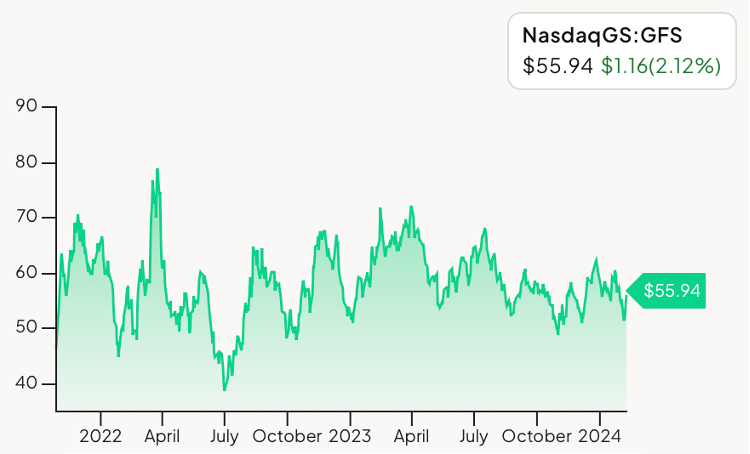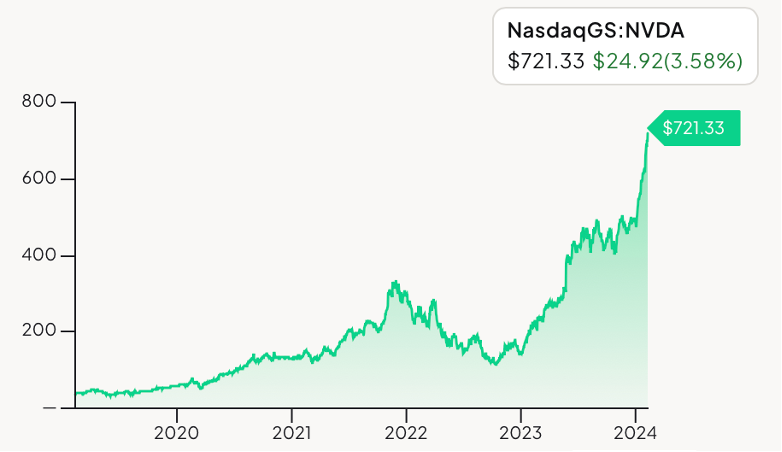
In the midst of the global financial crisis, one of the most pivotal deals in the semiconductor industry went down.
The world had more than its share of things to worry about at the time.
With stock markets crashing and financial institutions collapsing, unless you were in the semiconductor industry, the deal was easy to miss amongst all the chaos.
Advanced Micro Devices (AMD) made a bold move.
It spun out its semiconductor manufacturing plants in late 2008 into a $5.7 billion joint venture with Advanced Technology Investment Company (ATIC).
ATIC was basically a venture capital arm of Abu Dhabi, making the deal that much more interesting.
After all, Abu Dhabi, the capital of the U.A.E., was known for oil, not semiconductors.
It was a strategic move by AMD to get out of manufacturing. And it was also a move of necessity.
As a smaller semiconductor company competing with the giant Intel, AMD had basically run out of money trying to both design and manufacture its semiconductors.
If it kept spending on semiconductor manufacturing, it would have likely collapsed… hence the joint venture to get out of manufacturing.
The deal signaled an even larger shift in the semiconductor industry: An explosion of fabless semiconductor companies.
As the name suggests, fabless means that a semiconductor company has no manufacturing facilities of its own.
“Fab” is short for semiconductor fabrication plant. Being fabless meant being able to focus on semiconductor design, marketing, and sales… and not having to worry about the massive capital expenditures and operational expenses of building and maintaining fabs.
This shift radically impacted the semiconductor industry structure. It put Taiwan Semiconductor Manufacturing Corp. (TSMC) in a dominant position as the world’s leading contract manufacturer for semiconductors.
There was also Intel (INTC), but it’s manufacturing was focused on producing its own products.
That left Samsung’s semiconductor manufacturing, which had primarily been focused on semiconductors for computer memory, and United Microelectronics (UMC) — another Taiwan-based contract manufacturer — focused on less advanced semiconductor manufacturing.
That’s why the industry welcomed the new joint venture for semiconductor manufacturing between AMD and ATIC, which ultimately became known as Global Foundries (GFS).
Global Foundries represented some hope that there would be an alternative to dominant TSMC for leading-edge contract semiconductor manufacturing.
This spin-out turned out to be an incredible success for AMD.
While it took several years for the benefits to kick in, AMD took off like a rocket ship with much higher gross margins and sales. AMD had been one of my core recommendations to gain exposure to the explosion in artificial intelligence (AI) years ago.
Chart of AMD, 2008-Present

The same wasn’t true for Global Foundries, or the industry for that matter.
The company suffered through many restructurings, spent tens of billions of dollars, and finally went public in October of 2021.
Chart of Global Foundries (GFS) Since Its IPO

Global Foundries today carries a $30 billion enterprise value (EV), standing in stark contrast to TSMC’s $515 billion EV — worth only about 6% of TSMC.
The bigger problem for the industry, however, is that Global Foundries never became a legitimate alternative for producing leading-edge semiconductors for fabless semiconductor companies.
The same was true for large high-tech companies like Tesla, Meta, Amazon, and others who wanted to design and produce their own chips.
The reality is that TSMC’s largest customers — like NVIDIA, Apple, and Qualcomm — take priority over smaller fabless companies, due to the scale of their business.
This has long been the semiconductor industry’s largest pain point.
And it has become exacerbated with the latest boom in artificial intelligence.
In a very interesting development, Sam Altman, CEO of OpenAI, has been traveling lately… hunting for a lot of capital.
He’s been speaking with potential investors to raise somewhere between $5-7 trillion (not a typo) to radically increase the semiconductor industry’s chip production, specifically for AI-specific semiconductors.
The idea of increasing industry capacity is not new or radical at all — it’s the $5-7 trillion sum that is jaw-dropping.
To put the figure in context, global sales for semiconductors in 2023 was $526.8 billion. $7 trillion is about 13-times last year’s global industry sales.
And 2023 sales for semiconductor manufacturing equipment was “just” $100 billion.
To use a more specific example, TSMC had announced its plans to build a leading-edge, 3 nanometer fab in Arizona. The expected investment required is $40 billion in order to get the fab running by 2026.
Assuming $7 trillion is successfully raised, that would be enough to build the equivalent of 175 3-nanometer fabs similar to what TSMC had planned in AZ.
This figure alone gives us a sense of the incredible growth ahead in semiconductors.
Industry insiders in the world of artificial intelligence, like Sam Altman at OpenAI, believe that trillions of dollars need to be invested in semiconductor manufacturing in order to keep up with future demand for these AI-specific chips.
The truth is that the global semiconductor manufacturing base doesn’t have the capacity to meet the demand for what’s coming. There are already massive supply constraints for the work horses of artificial intelligence — GPUs — that have allowed NVIDIA and AMD to set their own prices.
NVIDIA is now the most valuable semiconductor company in the world, with an enterprise valuation of $1.77 trillion.
NVIDIA was one of my core AI recommendations made back in early 2016 at $24 a share. Just have a look where we are today.
5-Year Chart of NVIDIA (NVDA)

One of the questions I often get is, “Jeff, am I too late?”
Or “I wish I would have listened to you and bought AMD, NVIDIA, and Tesla. What can I do now? Is the party over?”
All I can say is that the AI party is just getting started.
There is a need to spend trillions of dollars on the foundational technology that enables AI.
This includes the foundational software like what OpenAI is building with GPT-4 and its future derivatives, as well as the AI-specific semiconductors.
GPUs are great for the kind of brute force computing required to train an AI… but that’s only a fraction of what the world will need.
AI-specific semiconductors are required at the edge of networks, in our smartphones, in our cars, in our smart glasses, and our health monitors.
Just about any consumer electronics device that we use throughout the day will benefit from having an AI-chip.
These are small, energy-efficient chips that run AI software and typically enable something called inference. They enable a device to infer the correct action or output.
We can think of them as a lightweight piece of technology to be used “in the field” capable of “thinking,” as opposed to the massive data centers required to run and train an AI in the cloud.
And that’s not to mention the kind of growth we’ll see in companies that rapidly employ AI technology to improve their own operations and offer new products and services. Two perfect examples of that are two other past recommendations of mine, Meta (META) and Salesforce (CRM), both of which are hovering around all-time highs.
The next wave of hot AI companies will be incredible. Some of these companies are public. Many are still private and looking for a window to access the public markets with an IPO.
Some notable private fabless semiconductor companies for us to watch are Cerebras, Graphcore, Lightmatter, Groq, d-Matrix, Rain AI, SambaNova, and Extropic. And that’s just scratching the surface.
Not surprisingly, Sam Altman has had discussions in the U.A.E. He has also spent some time with the CEO of Softbank, which still owns about 90% of ARM Holdings (ARM).
ARM is known for its highly optimized semiconductor architectures — high-performance designs capable of low power consumption. That’s made ARM’s semiconductors ideal for mobile devices… or any device requiring lower power consumption.
These discussions are relevant, as AI-specific chips can be designed using ARM semiconductor architectures.
Better yet, TSMC is also involved in the discussions. This makes perfect sense, as there is no other company more experienced in manufacturing at the outer limits of semiconductor manufacturing technology. It is hard for me to imagine a multi-trillion dollar deal where TSMC isn’t involved.
And there’s more.
The backdrop of this Altman-led initiative isn’t just the industry capacity problems, as I’ve explained above. It’s the acknowledgement that China will take control of Taiwan, thus the urgent need to build new fabs on U.S. and European soil.
Supply chain resiliency is critical for the global economy, and a necessity for those building a new world full of AI.
Altman’s initiative is also recognition that the current administration’s $52 billion CHIPS Act isn’t going to do it.
To date, it has been a grossly failed piece of policy having only distributed relatively small sums to support mature semiconductor technology, not the kind needed for AI.
The reality is that AI software is racing ahead at an accelerated pace. And the semiconductor industry is scrambling to develop the hardware (semiconductors) to fuel the growth.
This isn’t a problem government can solve. It moves too slow. It is far too inefficient.
The industry, and those with vast financial resources, are now rolling their sleeves up to make the investment of a lifetime.
We’ve welcomed a wave of new Outer Limits readers recently. If you’re just tuning in for the first time, welcome. We’d like to point you to our recently published FAQ, which you can access right here.
We welcome your questions, comments, or feedback. We read every email and address the most common threads in the Friday AMA. Please write to us here.